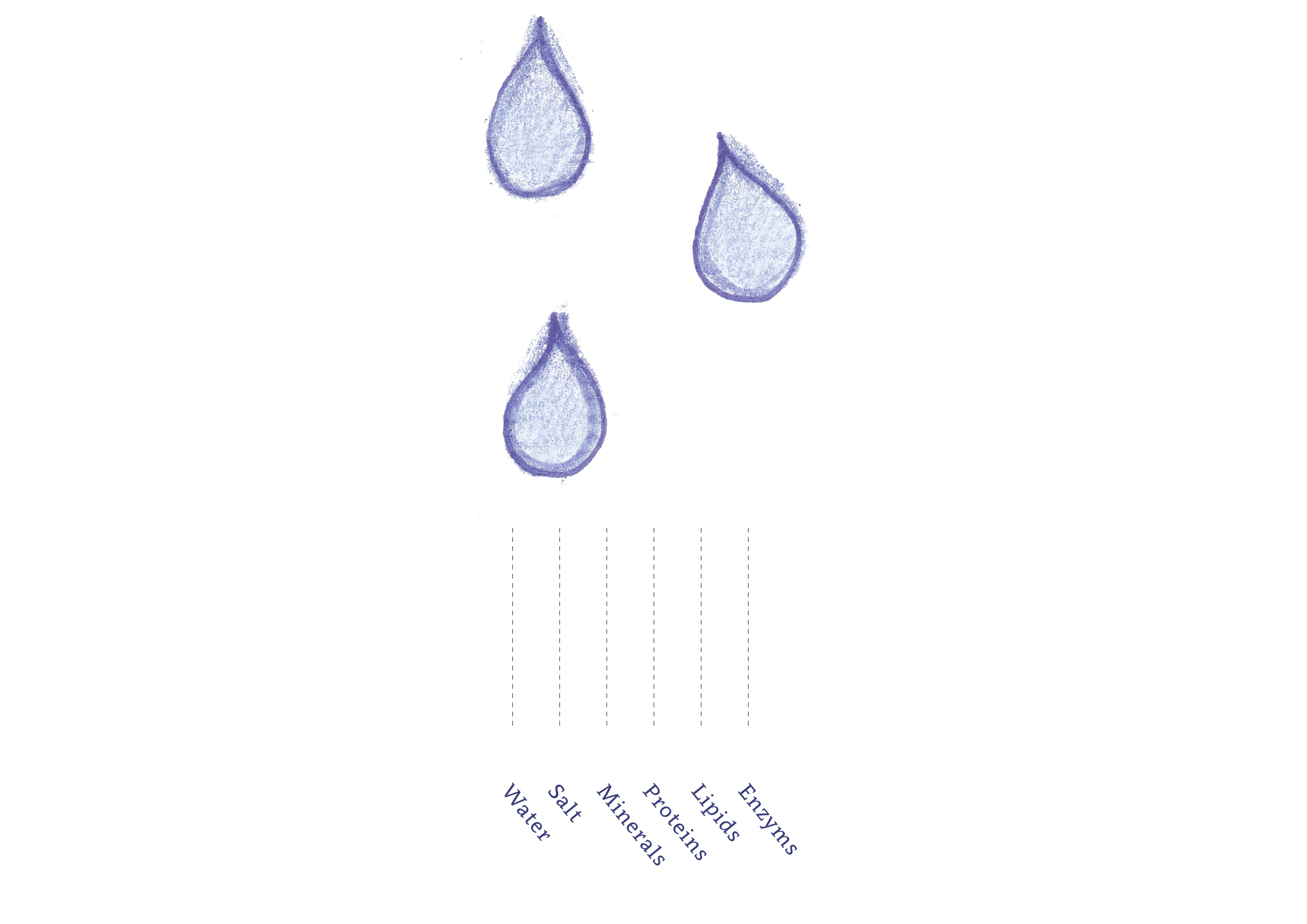What to do with unwanted tears?
2015
We are not all humans, at least not to the same extent, if a ‘human’ refers to the dominant image of the subject as white, civilized, educated, well behaving male. But world around isn’t human in a way it is described above.
This project proposes a new form of dealing with the Other. The Other here should be understands as emotional human creature.
From the social point of view, crying serves as a communication tool evoking help from others. It distress and encourage group behavior, improve social support and inhibit aggression. In the other words - crying can be understands as asking for support. Crying appears to be universally strong social stimulus. However, according to psychologists Jay S. Efran and Timothy J. Spangler, even though crying is considered a healthy behavior, there is a social taboo related to it. There appears to be a stigma attached to crying, since crying is often associated with a weakness and helplessness instead of its communicative and cathartic role. In a modern society, by repressing cry and vulnerability, and by creating taboos around them, we suppress our empathy towards other living creatures.
This project address the issue of expressing 'extreme' emotions like crying in the Western societies. Tears - the outcome of crying - are shared with other creature; therefore crying isn't 'useless' and embarrassing. Moreover an empathetic connection is established.
![]()
selfie photo by Hans Bänziger
2015
We are not all humans, at least not to the same extent, if a ‘human’ refers to the dominant image of the subject as white, civilized, educated, well behaving male. But world around isn’t human in a way it is described above.
This project proposes a new form of dealing with the Other. The Other here should be understands as emotional human creature.
From the social point of view, crying serves as a communication tool evoking help from others. It distress and encourage group behavior, improve social support and inhibit aggression. In the other words - crying can be understands as asking for support. Crying appears to be universally strong social stimulus. However, according to psychologists Jay S. Efran and Timothy J. Spangler, even though crying is considered a healthy behavior, there is a social taboo related to it. There appears to be a stigma attached to crying, since crying is often associated with a weakness and helplessness instead of its communicative and cathartic role. In a modern society, by repressing cry and vulnerability, and by creating taboos around them, we suppress our empathy towards other living creatures.
This project address the issue of expressing 'extreme' emotions like crying in the Western societies. Tears - the outcome of crying - are shared with other creature; therefore crying isn't 'useless' and embarrassing. Moreover an empathetic connection is established.

Lachryphagy is the consumption of tears. Some insects drink tears from the eyes of large animals, such as cows, deer, birds and sometimes even people. Animals that exhibit this behavior are described as lachryphagous. The term comes from lachrymal, the name for the tear-producing glands. Lisotrigona cacciae, Lisotrigona furva and Pariotrigona klossi are the three of the species that have been observed drinking tears from human eyes. They mostly landed on the lower eyelashes from where they imbibed tears for up to two minutes, often singly but occasionally in congregations of five to seven specimens per eye.
In world with a little empathetic drive towards the others, this project speculates about a new form of interaction and acceptance with the otherness. Tears aren’t useless and embarrassing anymore, since they have a new function and purpose. Embarrassing and uncomfortable event is turned other way around.
In world with a little empathetic drive towards the others, this project speculates about a new form of interaction and acceptance with the otherness. Tears aren’t useless and embarrassing anymore, since they have a new function and purpose. Embarrassing and uncomfortable event is turned other way around.



